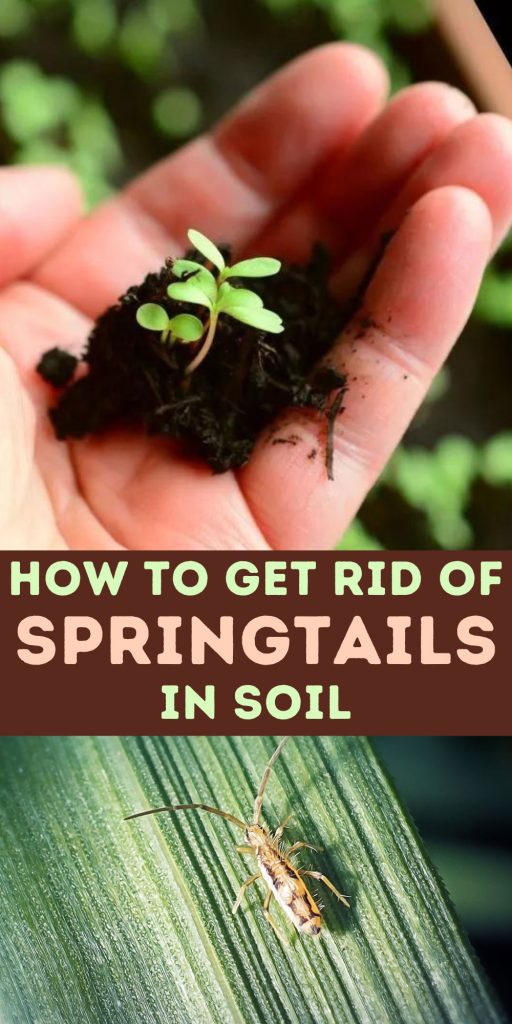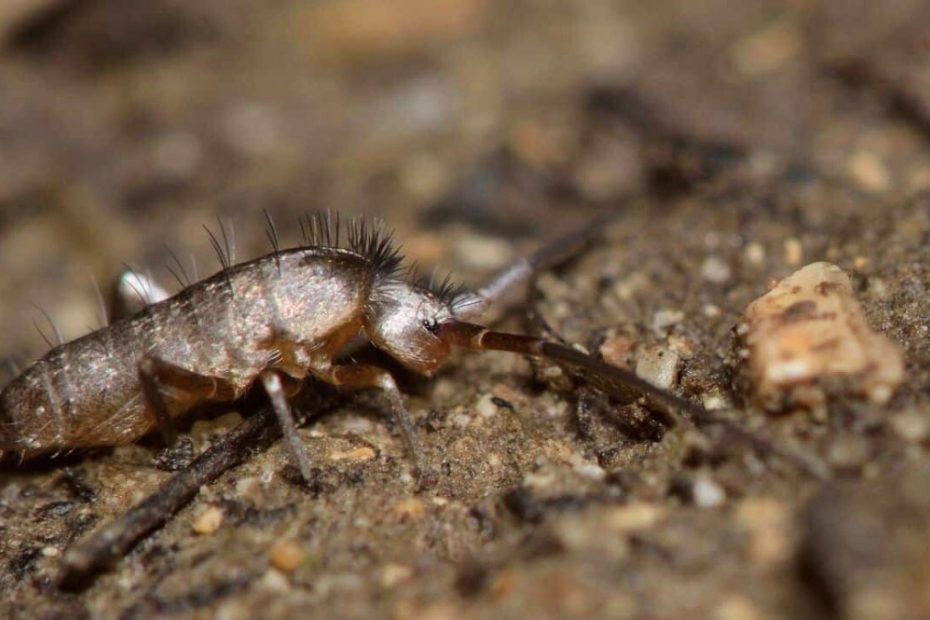If you’ve noticed tiny, jumping insects in your garden or potted plants, you’re likely dealing with springtails. These minuscule pests thrive in moist environments and can quickly become a nuisance, affecting the health of your soil and plants. While they don’t directly harm plants, their presence often indicates underlying issues like overwatering or poor soil conditions.
Understanding how to get rid of springtails in soil is crucial for maintaining a healthy garden. By addressing the root causes and implementing effective control methods, you can create an environment where these pests can’t thrive. Let’s explore some practical steps you can take to eliminate springtails and keep your plants flourishing.
Key Takeaways
- Understanding Springtails: Springtails are tiny insects that thrive in moist environments. Identifying their presence and the conditions that attract them is crucial for managing infestations.
- Identifying Infestation: Look for visible movement, moist soil, clustering, and the presence of mold and fungi to identify a springtail infestation.
- Prevention Strategies: Maintain proper soil moisture, improve soil drainage, and utilize organic mulch to create an environment less hospitable to springtails.
- Effective Removal Methods: Use a combination of natural remedies, chemical treatments, and predatory insects to eliminate springtails. Options include diatomaceous earth, neem oil, insecticidal soaps, and introducing beneficial insects like Hypoaspis miles.
- Post-Treatment Care: Regularly monitor soil health, check moisture levels, and adopt long-term preventative measures like adjusting watering practices and using well-draining soil to prevent future infestations.

Understanding Springtails
Springtails, small insects known for their jumping ability, often inhabit moist environments. They thrive in gardens, potted plants, and areas with high humidity. Understanding their biology and behavior helps in managing their presence effectively.
What Are Springtails?
Springtails, scientifically named Collembola, are tiny insects that measure about 1-2 millimeters. Their notable features include:
- Furcula: A spring-loaded structure that allows them to jump.
- Antennae: Sensitive to environmental changes, helping them find moisture.
- Soft Bodies: Usually white, gray, or pale-colored, making them less noticeable.
These insects feed on decaying organic matter, fungi, and algae, contributing positively to the soil ecosystem by recycling nutrients, though their presence in large numbers can signal underlying issues.
Why Springtails Appear in Soil
Springtails thrive in moist environments, so they often appear in soil when certain conditions are met, such as:
- Overwatering: Excess moisture creates an ideal habitat for springtails.
- Poor Drainage: Soil that doesn’t drain well retains water, attracting these insects.
- Organic Material: Decaying leaves, compost, or other organic matter provide food and habitat.
They are typically harmless to plants, feeding on decaying materials rather than living plant tissue. But, their presence can indicate potential problems in the soil environment that need addressing to maintain optimal plant health.
By understanding why springtails thrive, you can take steps to modify the conditions that attract them, leading to better soil management and healthier gardens.
Identifying Infestation
Knowing how to identify a springtail infestation in soil helps in taking timely action to protect your plants.
Signs of Springtails in Soil
Visible Movement: You might see tiny, white, or gray insects jumping on the soil surface, particularly when disturbed.
Moist Soil: Springtails thrive in wet environments. Observe if your soil remains consistently damp.
Clustering: They often congregate in large numbers. Check under plant pots or debris.
Mold and Fungi: Presence of mold and fungi can indicate springtails. These insects feed on decaying matter.
The Impact of Springtails on Plants
Nutrient Depletion: Excessive springtails can consume organic matter meant for the plants, potentially reducing soil quality.
Root Damage: While rare, massive infestations may harm seedling roots, impacting plant growth.
Disease Indicator: Their presence may signal overwatering, leading to other plant diseases.
Recognizing an infestation early and understanding its impact ensures that you can address the conditions attracting springtails, maintaining a healthier garden ecosystem.
Prevention Strategies
Preventing springtails in soil ensures a healthier garden environment. These strategies focus on maintaining optimal soil conditions to deter springtail infestations.
Maintaining Proper Soil Moisture
Keeping soil moisture at the right level is key to preventing springtails. Overly moist soil attracts them, so balance watering habits.
- Monitor Soil Moisture: Use a soil moisture meter to check levels regularly.
- Adjust Watering Schedule: Water plants only when the top inch of soil feels dry.
- Avoid Overwatering: Ensure water sinks into the soil instead of pooling on the surface.
Improving Soil Drainage
Good soil drainage prevents excess moisture, which attracts springtails.
- Use Well-Draining Soil: Opt for soil mixes that easily allow water to filter through.
- Add Amendments: Incorporate perlite or sand to improve soil drainage.
- Check Pot Drainage: Ensure plant pots have drainage holes to prevent waterlogging.
Utilizing Organic Mulch
Organic mulch helps regulate moisture and suppresses springtail-friendly environments.
- Choose the Right Mulch: Use bark, wood chips, or straw for best results.
- Apply Correctly: Spread a 2-3 inch layer, keeping it away from plant stems.
- Maintain Mulch: Replace or replenish mulch periodically to keep it effective.
By maintaining proper soil moisture, improving drainage, and using organic mulch, you can effectively prevent springtail infestations and promote a healthier garden environment.
Effective Removal Methods
Dealing with springtails in your soil requires a multifaceted approach. Combining natural and chemical methods, along with introducing predatory insects, will help you effectively eliminate these pests.
Natural Remedies
You can start with natural remedies to get rid of springtails without using harsh chemicals. These methods leverage commonly available items and are safe for both you and your garden.
- Diatomaceous Earth: Sprinkle diatomaceous earth on the soil surface. This natural powder dehydrates pests like springtails, leading to their eventual death.
- Neem Oil: Mix neem oil with water and spray it on the soil. Neem oil disrupts the life cycle of insects, reducing their numbers over time.
- Moisture Control: Reduce watering and improve soil drainage. Springtails thrive in moist environments, so making the soil less hospitable can naturally reduce their population.
Chemical Treatments
In cases where natural remedies aren’t sufficient, chemical treatments offer a stronger alternative. These products effectively target and eliminate springtails but should be used with caution.
- Insecticidal Soaps: Spray insecticidal soap directly on the affected soil. These soaps weaken the exoskeletons of insects, eventually killing them.
- Pyrethroid-Based Insecticides: Use pyrethroid-based insecticides for severe infestations. These chemicals are highly effective but should be applied carefully to avoid harming beneficial insects.
- Systemic Insecticides: Apply systemic insecticides if the infestation is widespread. These products are absorbed by plants and target pests that feed on them.
Introducing Predatory Insects
Another effective method to control springtails is introducing predatory insects that naturally keep their population in check.
- Hypoaspis Miles: Release Hypoaspis miles, a soil-dwelling predatory mite, into your garden. They feed on springtails and other small pests without harming plants.
- Rove Beetles: Introduce rove beetles to your garden. These beetles are natural predators of springtails and help maintain a balanced soil ecosystem.
Combining these methods ensures a comprehensive approach to controlling springtails in your soil. By addressing both immediate and long-term solutions, you can maintain a healthier garden environment.
Post-Treatment Care
After successfully treating your soil for springtails, maintaining optimal conditions ensures they don’t return. Proper post-treatment care fosters a healthy garden environment and minimizes the likelihood of reinfestations.
Monitoring Soil Health
Regularly monitoring soil health helps detect any issues early.
Soil Moisture:
- Check the moisture level with a soil moisture meter.
- Ensure soil isn’t consistently damp.
Organic Matter:
- Inspect for decomposing organic materials.
- Remove debris that could attract springtails.
Drainage:
- Confirm proper drainage in your pots and garden beds.
- Look out for water pooling at the soil surface.
Long-term Preventative Measures
Adopting long-term preventative measures fortifies your garden against future infestations.
Watering Practices:
- Adjust your watering schedule to avoid overwatering.
- Water plants deeply but less frequently.
Soil Amendments:
- Use well-draining soil mixes.
- Add organic matter to improve soil structure.
Plant Rotation:
- Rotate crops to avoid continuous planting in one area.
- Prevent pests from establishing a permanent presence.
- Introduce beneficial insects like Hypoaspis miles.
- These predators help keep springtail populations in check.
Consistent monitoring and implementing preventive measures create an inhospitable environment for springtails and promote overall plant health.
Conclusion
Understanding springtails and their impact on your garden is crucial for maintaining plant health. By addressing underlying issues like overwatering and poor soil conditions, you can create an environment that’s less hospitable to these pests. Combining natural and chemical methods, along with introducing predatory insects, offers a comprehensive approach to managing springtail populations.
Consistent monitoring of soil health and moisture levels, along with implementing long-term preventative measures, ensures a healthier garden. Regular inspections and adjustments to your gardening practices will help keep springtails at bay while promoting a thriving garden ecosystem.
Frequently Asked Questions
What are springtails, and why are they in my garden?
Springtails, scientifically known as Collembola, are tiny jumping insects often found in gardens and potted plants, particularly in moist environments. They thrive in damp conditions and feed on decaying organic matter. Their presence often indicates overwatering or poor soil conditions.
Do springtails harm plants?
While springtails do not directly harm plants, large populations can signal underlying issues like overwatering, nutrient depletion, or poor soil drainage. Addressing these conditions is crucial to maintaining plant health.
How do I know if I have a springtail infestation?
Signs of a springtail infestation include visible movement on the soil surface, consistently damp soil, clustering under plant pots or debris, and the presence of mold and fungi. Early recognition helps in managing the problem effectively.
What are some effective methods to control springtail infestations?
Effective control methods include addressing underlying issues such as overwatering and poor drainage, using natural remedies like diatomaceous earth and neem oil, and introducing predatory insects. Chemical treatments are also an option for severe infestations but should be used cautiously.
How can I prevent springtail infestations in the future?
Prevention strategies include maintaining optimal soil conditions, monitoring soil moisture with a meter, adjusting watering schedules to prevent overwatering, improving soil drainage, and using organic mulch. Regular monitoring and implementing these practices create an inhospitable environment for springtails.
Are there natural ways to get rid of springtails?
Yes, natural remedies include using diatomaceous earth, neem oil, and moisture control to create less hospitable conditions for springtails. Introducing predatory insects like Hypoaspis miles and rove beetles can also help control populations naturally.
Are chemical treatments safe for eliminating springtails?
Chemical treatments such as insecticidal soaps, pyrethroid-based insecticides, and systemic insecticides can be effective but should be used cautiously to minimize harm to beneficial insects and the environment. Always follow the manufacturer’s instructions.
What long-term measures can I take to prevent springtail reinfestations?
Long-term measures include regular soil health monitoring, checking moisture levels, inspecting for decaying organic materials, ensuring proper drainage, using well-draining soil mixes, rotating crops, and introducing beneficial insects. Consistent implementation of these strategies helps maintain a healthy garden environment.
